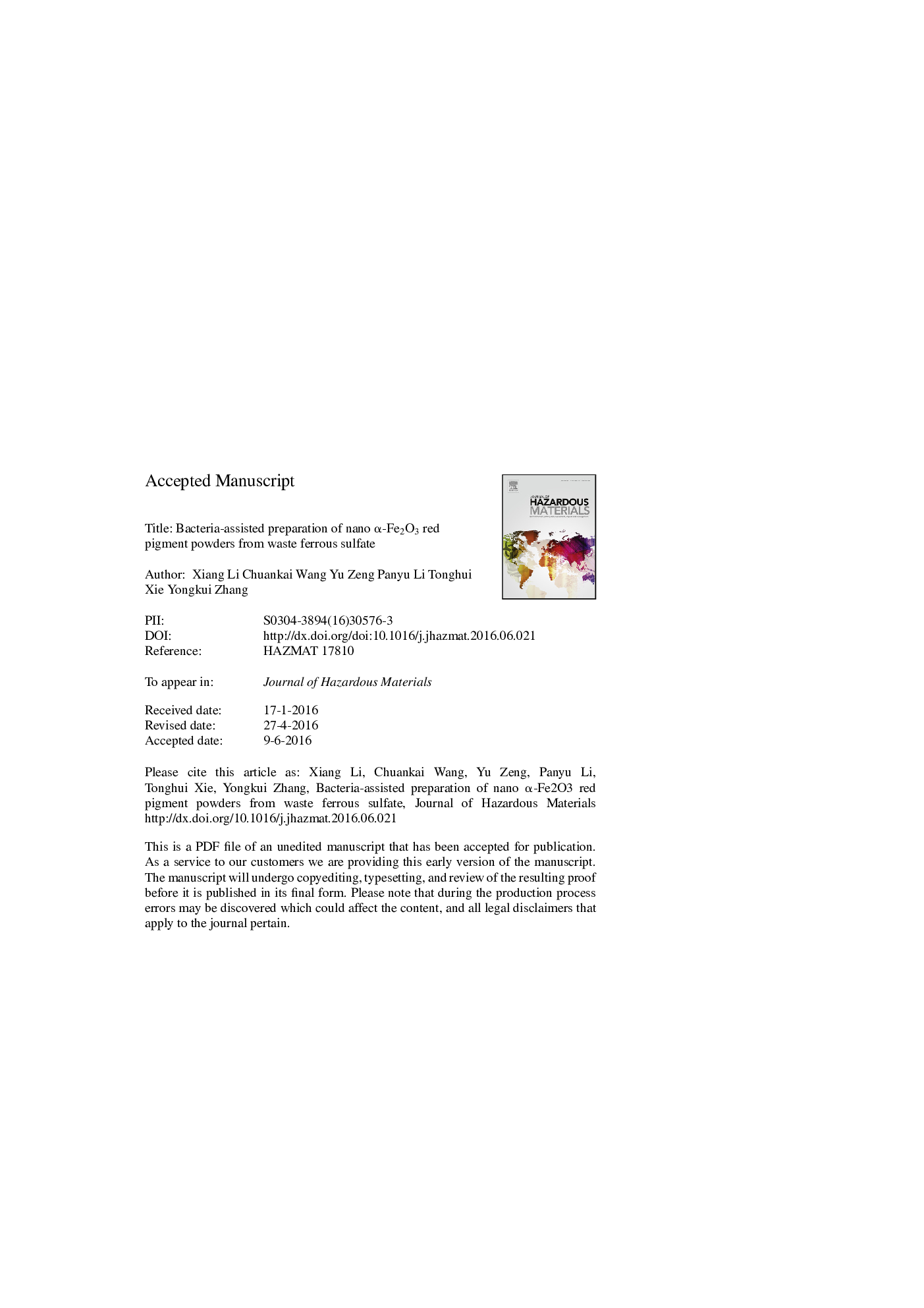| Article ID | Journal | Published Year | Pages | File Type |
|---|---|---|---|---|
| 6970341 | Journal of Hazardous Materials | 2016 | 22 Pages |
Abstract
Massive ferrous sulfate with excess sulfuric acid is produced in titanium dioxide industry each year, ending up stockpiled or in landfills as solid waste, which is hazardous to environment and in urgent demand to be recycled. In this study, waste ferrous sulfate was used as a second raw material to synthesize nano α-Fe2O3 red pigment powders with a bacteria-assisted oxidation process by Acidithiobacillus ferrooxidans. The synthesis route, mainly consisting of bio-oxidation, precipitation and calcination, was investigated by means of titration, thermogravimetric analysis (TGA), X-ray diffraction (XRD), scanning electron microscope (SEM) and X-ray fluorescence (XRF) to obtain optimum conditions. Under the optimum conditions, nano α-Fe2O3 red pigment powders contained 98.24 wt.% of Fe2O3 were successfully prepared, with a morphology of spheroidal and particle size ranged from 22 nm to 86 nm and averaged at 45 nm. Moreover, the resulting product fulfilled ISO 1248-2006, the standards of iron oxide pigments.
Related Topics
Physical Sciences and Engineering
Chemical Engineering
Chemical Health and Safety
Authors
Xiang Li, Chuankai Wang, Yu Zeng, Panyu Li, Tonghui Xie, Yongkui Zhang,
